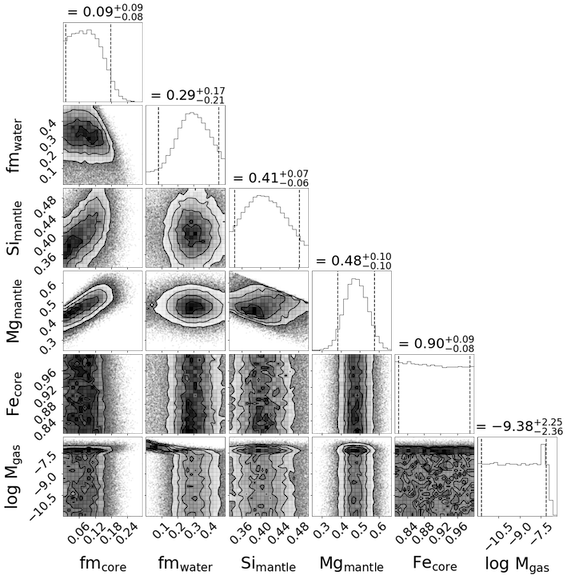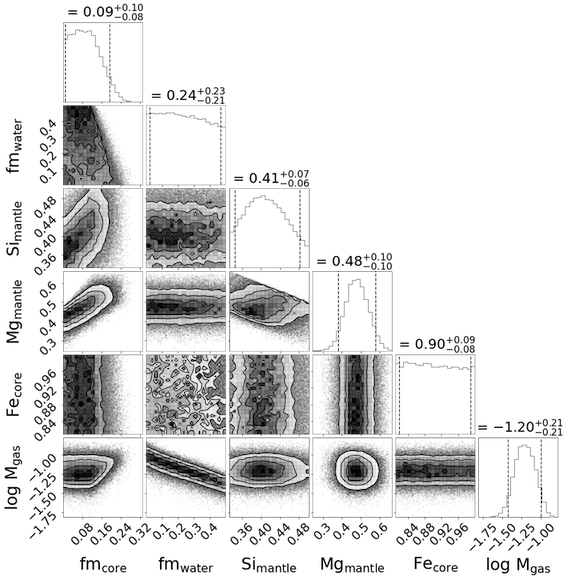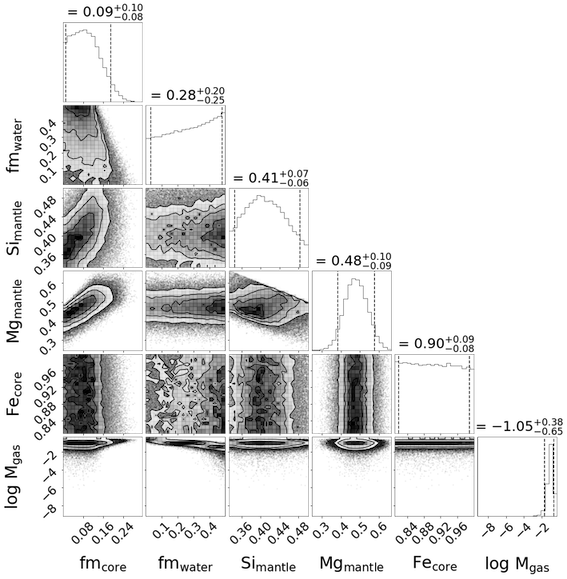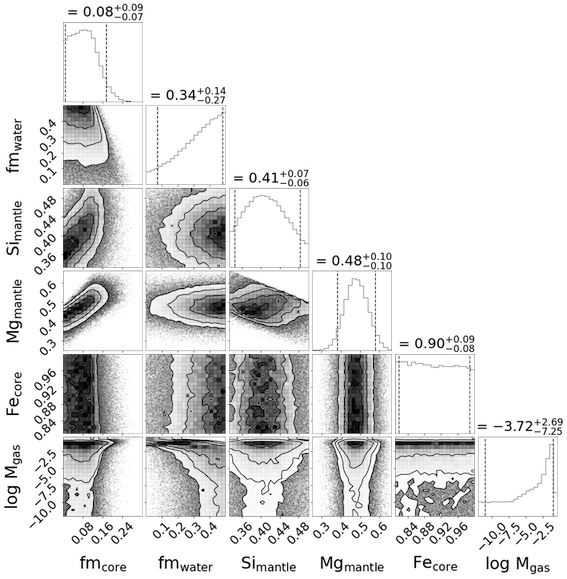A Neural Network Based Approach to Modelling the Internal Structure of Transiting Exoplanets and Its Application to Planets Observed by the CHEOPS Mission
- 1Universität Bern, Physikalisches Institut, Gesellschaftsstrasse 6, 3012 Bern, Switzerland (jo-ann.egger@unibe.ch)
- 2Gymnasium Lerbermatt, Abteilung Physik, Kirchstrasse 64, 3098 Köniz, Switzerland
- 3Observatoire Astronomique de l’Université de Genève, Chemin Pegasi 51, Versoix, Switzerland
A central question in exoplanetary research is the characterisation of the composition and internal structure of exoplanets. However, the observable parameters of an exoplanet are scarce and generally limited to the planet’s mass and radius and the properties of its host star. This means that it is not possible to fully constrain the internal structure parameters of an exoplanet, such as the iron core mass fraction, the presence of a water layer or the amount of gas, from these observations: The problem is intrinsically degenerate [1,2].
To overcome this difficulty, a Bayesian inference scheme is used, which is an inverse method based on Bayes’ theorem. It updates the previously assumed probability of the internal structure parameters (the prior) based on the probability of the observation given the same parameters (the likelihood), returning the posterior distribution of these parameters.
In our case, the likelihood is determined based on an internal structure model, which calculates the radius of a planet with a given mass and composition based on the planetary structure equations as described in [6]. This calculated radius and the transit depth it implies are then compared to the observed transit depth of the real planet. For the internal structure model, we use the BICEPS code as described in [4] and based on [2,3] to model the core, mantle and water layers of the planet; the atmosphere is modelled separately according to [5]. For the composition, we assume that the planetary composition matches the one of the star exactly [7].
We developed a full grid approach that has multiple advantages over the traditionally used scheme based on Markov chain Monte Carlo methods. To compensate for the higher number of sampling points that such a brute force approach requires, we trained a deep neural network to replace the internal structure model, which significantly reduces the computation time of the model. Additionally, we take into account that the measured masses and radii of the planets in the same system are correlated, since they were measured relative to the same star. This allows for an increase in computation time that is only linear when adding an additional planet. The full approach including the internal structure model is described in more detail in [8].
This method has already been used to characterise the internal structure of various exoplanets observed by the CHEOPS mission, e.g. [8] and [9] (and more submitted). As an example, Figures 1 – 4 show the internal structure of TOI-561 b, c, d and e, calculated using the planetary and stellar parameters published in [9]. Note that the corresponding figures in [9] showing the posteriors of the internal structure parameters unfortunately do not use the published stellar parameters, see [10] for more details.

Figure 1. Posterior distribution of the most important internal structure parameters of TOI-561 b using the planetary and stellar parameters published in [9]. The shown parameters are the core and water mass fractions of the solid planet, the molar fractions of Si and Mg in the mantle and Fe in the core and the gas mass of the planet in Earth masses in a logarithmic scale. The dashed lines show the 5 and 95% quantiles, while in the titles the median and the 5 and 95% quantiles are shown.

Figure 2. Same as Figure 1 but for planet TOI-561 c.

Figure 3. Same as Figure 1 but for planet TOI-561 d.

Figure 4. Same as Figure 1 but for planet TOI-561 e.
References:
[1] Rogers, L. & Seager, S. 2010, The Astrophysical Journal, 712, 974
[2] Dorn, C., Khan, A., Heng, K., et al. 2015, A&A, 577, A83
[3] Dorn, C., Venturini, J., Khan, A., et al. 2017b, A&A, 597, A37
[4] Haldemann, J., et al. (in prep.)
[5] Lopez, E. D. & Fortney, J. J. 2014, ApJ, 792, 1
[6] Kippenhahn, R., Weigert, A. & Weiss, A. 2012, Stellar Structure and Evolution, 2nd edn., Astronomy and Astrophysics Library (Berlin Heidelberg: SpringerVerlag)
[7] Thiabaud, A., Marboeuf, U., Alibert, Y., Leya, I., & Mezger, K. 2015, A&A, 580, A30
[8] Leleu, A., Alibert, Y., Hara, N.C., et al. 2021, A&A, 649, A26
[9] Lacedelli, G., Wilson, T.G., Malavolta, L., et al. 2022, MNRAS, 511, 4551–4571
[10] Piotto, G., et al. (in prep.)
How to cite: Egger, J. A., Alibert, Y., Haldemann, J., and Venturini, J.: A Neural Network Based Approach to Modelling the Internal Structure of Transiting Exoplanets and Its Application to Planets Observed by the CHEOPS Mission, Europlanet Science Congress 2022, Granada, Spain, 18–23 Sep 2022, EPSC2022-320, https://doi.org/10.5194/epsc2022-320, 2022.

